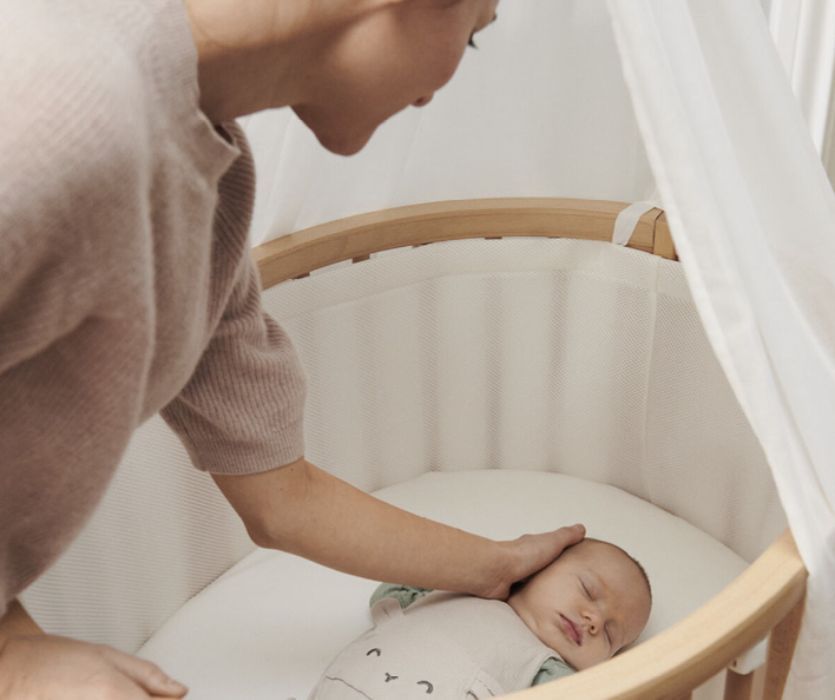The dreaded four-month sleep regression is a hot topic of discussion for many new parents. Just when you think you’re in the clear, things are getting easier and WHAMO, your four-month-old baby is up all night, won’t nap during the day and you’re at a loss for what to do.
Your friends assure you that it’s just the four-month sleep regression, every baby goes through it and it won’t last forever. That’s one way to look at it. Or, you could dare to be different and try on a new perspective.
The four-month sleep regression is not really a regression at all but an opportunity to guide your baby down the path of healthy sleep.
Why does it seem that your baby’s sleep has become a nightmare at the four-month mark?
The change is due to your child’s neurological development at four months old.
Day and night sleep is organized, which means that if we don’t follow our baby’s biological rhythms in how we offer sleep, our child will become overtired. Overtired babies have a difficult time falling and staying asleep.
Here’s how to re-think sleep regression and opt for opportunity at the four-month mark:
1. Follow Your Baby’s Body Clock
We all experience the drive to sleep during the day. Many of us can relate to feeling a little sleepy after lunch and again after 9 p.m. in the evening.
This is a result of our body’s circadian rhythm or body clock. It’s this internal clock, which is regulated by light that promotes sleep at particular times during the day. If we sleep at those times, we experience the most beneficial, restorative sleep.
Our four-month-old babies are no different. They have developed their own circadian rhythm. If we overlook their need to sleep when their body temperature dips and melatonin production increases, we see babies who do not settle easily or sleep for long stretches.
Most four-month-olds can tolerate about 2 hours of awake time. Babies who take longer naps will naturally fall into a rhythm of napping in the morning, after lunch and again in the late afternoon.
2. Use a Consistent Sleeping Space
The days of easy napping on the go are over. Four-month-old babies are able to recognize their sleeping space and follow social cues.
If you want your baby to settle into a restorative nap, the grocery store, car seat or baby carrier sadly won’t cut it. Our children thrive in consistent environments and your baby’s sleeping space is no exception. In addition, establishing a regular nap and bedtime routine is a key component of cueing baby that it’s time to sleep.
It’s also important to note that motion naps are not as restorative as stationary naps as we can never reach the deeper stages of sleep while we’re in motion. This is also the time to ensure your baby’s sleep environment is slightly cooler than room temperature, dark and safe. A sound machine playing pure white noise placed away from the crib on a low setting is also a good cue for sleep.
3. See the Benefits of an Early Bedtime
All sleep has a purpose. The morning nap restores our babies mentally, while the afternoon nap offers physical benefits to growing little ones.
It’s during nighttime sleep, specifically the first half of the night, until approximately midnight when our babies receive the benefit of the growth hormone. So it’s important that we are getting our babies as much nighttime sleep as possible.
We know that nighttime sleep organizes around the 6-8 week mark when day/night confusion ends. This means that an earlier bedtime is appropriate at that time and certainly by four months old.
Most well-rested babies do well with a bedtime between 6-7 pm. Those who are napping poorly benefit from an even earlier bedtime to make up for sleep that is lost during the day.
4. Take a Look at Who Is Putting Baby to Sleep
Babies who are put to sleep are often more wakeful in the night than those who are able to go to sleep independently. The reason for this requires an understanding of sleep cycles.
When we fall asleep we enter a sleep cycle that lasts from 45 minutes to 1 hour. During that time we go through four stages of sleep which are followed by REM. After REM we have a brief awakening where we scan the surface of our environment. A person with good sleep skills will not even be aware that this brief awakening has occurred and will transition into the next sleep cycle.
If your baby entered a sleep cycle in your arms, in a car seat, in the living room, with a bottle, at the breast or with a pacifier and has woken to find those circumstances have changed, your baby will likely require that you recreate that situation to return to sleep.
Babies who are given the opportunity to fall asleep rather than being put to sleep have an easier time independently transitioning through sleep cycles.
Final Thoughts on the Four Month Sleep Regression
If you are the parent of a four-month-old who has hit the dreaded four-month sleep regression, consider a new approach. Re-think the four-month sleep regression and opt for opportunity instead.
Related: Sleep Training Tips You Can Start Tonight (That Don’t Include Crying It Out)




Leave a Comment